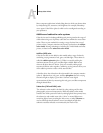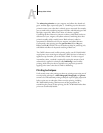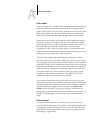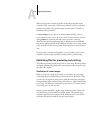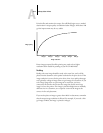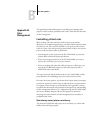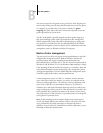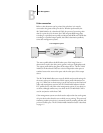
A
A-9 Desktop Color Primer
When printing raster artwork, the quality of the output depends on the
resolution of the source raster. If the raster resolution is too low, individual
pixels become visible in the printed output as small squares. This effect is
sometimes called “pixelation.”
In vector images, picture objects are defined mathematically as lines or
curves between points—hence the term “vector.” Picture elements can have
solid, gradient, or patterned color fills. Vector artwork is created in
illustration and drawing applications such as Illustrator and CorelDRAW.
Page layout applications such as QuarkXPress also allow you to create simple
vector artwork with their drawing tools. PostScript fonts are vector-based as
well.
Vector artwork is resolution-independent; it can be scaled to any size and
resolution without danger of pixels becoming visible in printed output.
Optimizing files for processing and printing
The following sections provide tips on how to create image files that produce
the highest possible print quality while minimizing the processing time and
disk space they require.
Resolution of raster images
While a 72 ppi raster image appears sharp on a monitor, the same image
would likely appear pixelated when printed to the iR C2100/2100S. Color
print devices are capable of much greater detail than monitors, and require
correspondingly higher resolution image files. However, high-resolution files
can be large, and therefore cumbersome to transmit over a network, process
for printing, store on disk, and edit.
Beyond a certain threshold, a higher image resolution greatly increases file
size while having a minimal effect on output quality. The optimal image
resolution depends on the resolution of the final print device. Aim for the
resolution that optimizes both file size and output quality.





